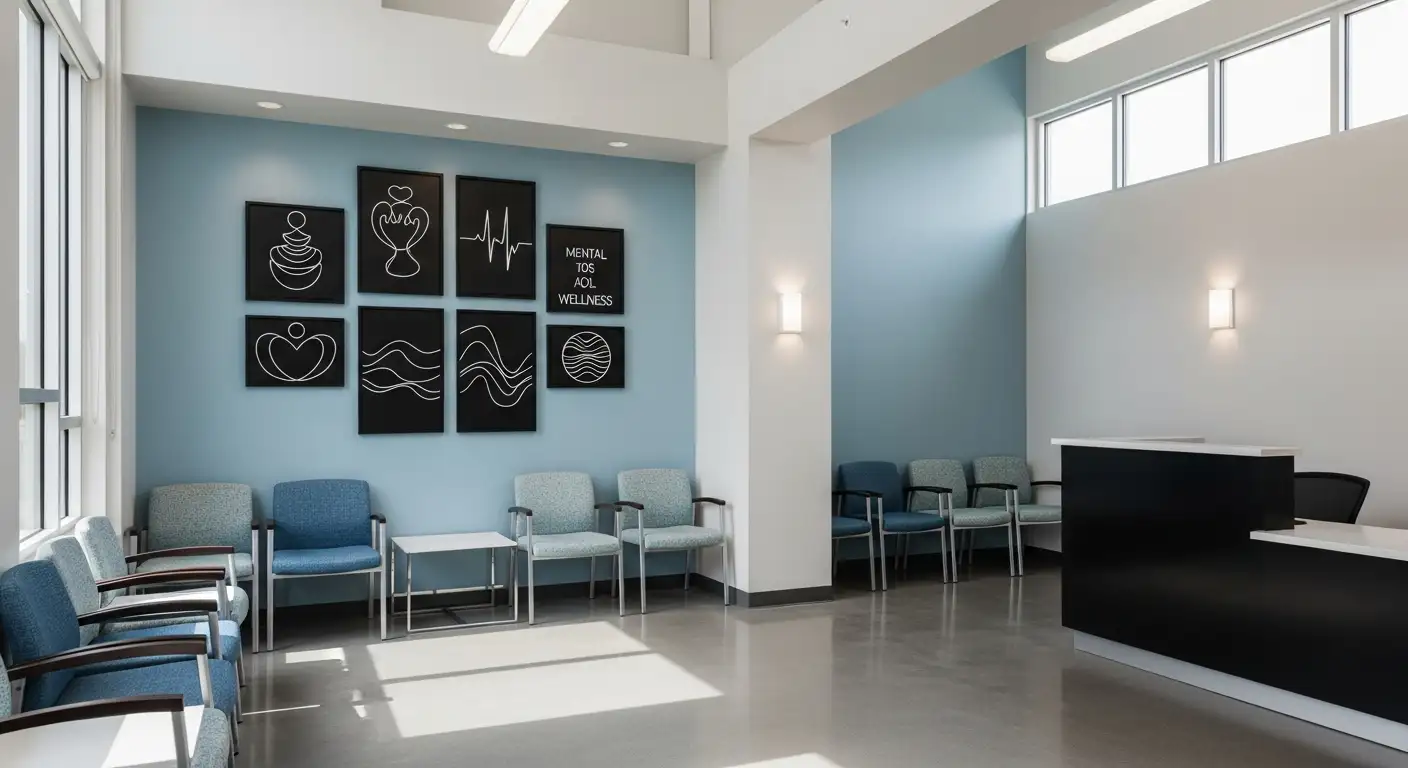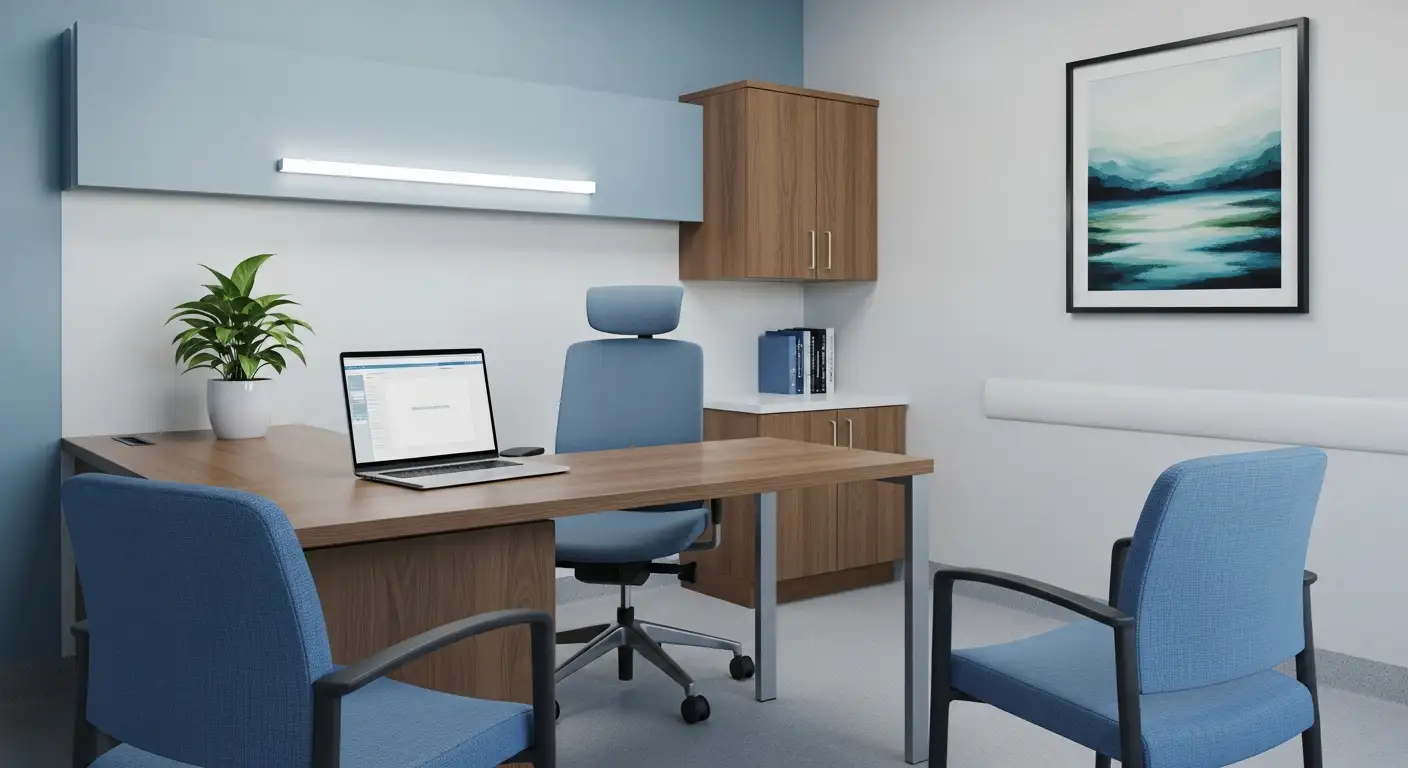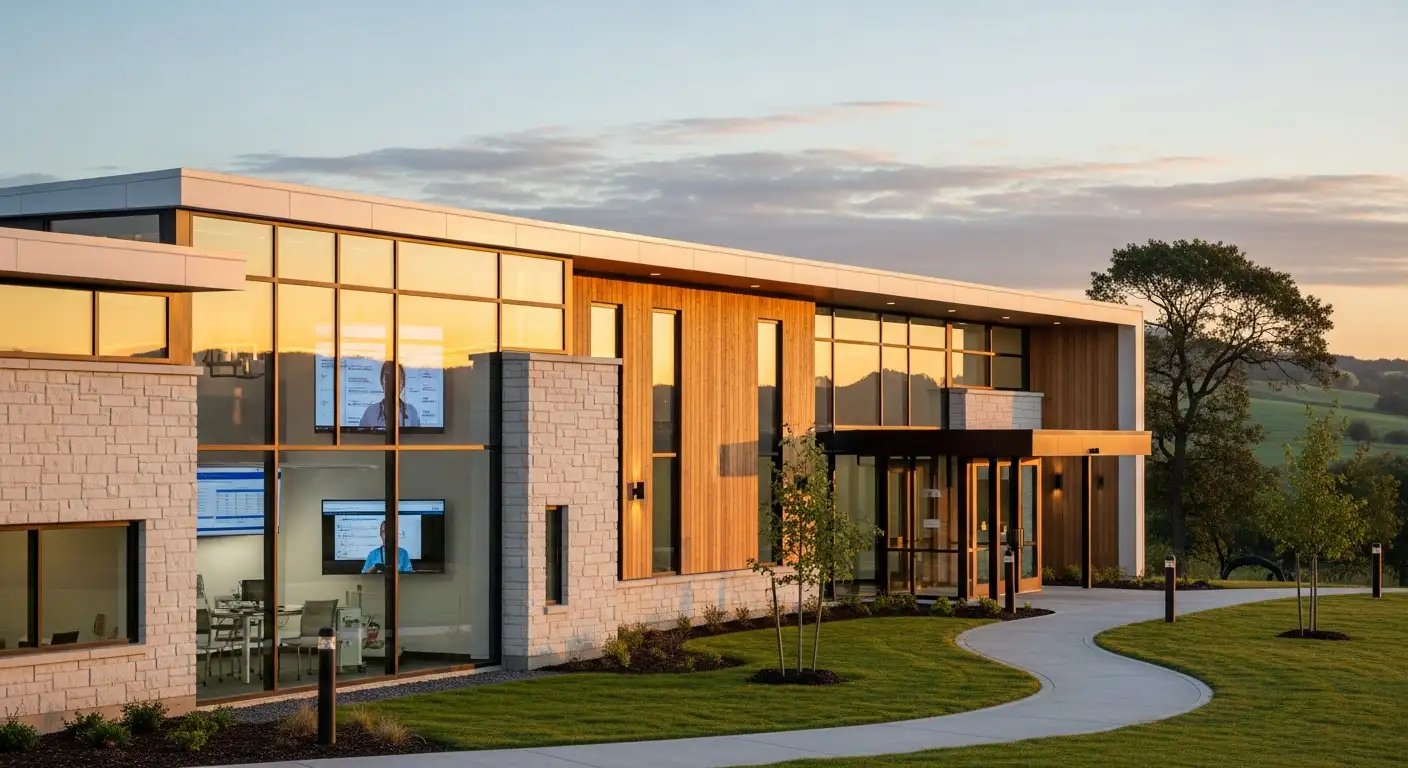Navigating Complex Resident Behaviors in Care Facilities
Long-term care communities face ongoing challenges in managing residents exhibiting difficult behaviors, particularly those with substance use disorders and mental health issues. Empowering staff through comprehensive training and integrated treatment strategies is essential to create safe, empathetic, and supportive environments that cater to the complex needs of these residents. This article explores best practices, treatment modalities, and behavioral health training approaches that help care teams effectively navigate and respond to challenging resident behaviors.
Understanding the Complexities of Substance Use Disorders Among Residents

Prevalence of substance use disorders in long-term care
Substance use disorders continue to affect residents in long-term care settings, underscoring the need for open and nonjudgmental recognition. These disorders often coexist with the primary health conditions requiring long-term care, creating a layered challenge for caregivers and medical staff.
Impact of comorbidities and complex health conditions
Residents frequently present with multiple comorbidities alongside substance use disorders. These complex health issues can complicate treatment approaches, requiring a comprehensive evaluation of each resident's physical and mental health status. Care plans must be highly individualized to address intertwined conditions and optimize outcomes.
Challenges posed by damaged interpersonal relationships
Many residents with substance use issues have histories marked by damaged relationships, which may influence their willingness to engage in treatment. Negative past experiences can impact trust in care providers and complicate the delivery of effective interventions.
What types of comprehensive treatment services are available for substance abuse and mental health issues?
Comprehensive treatment services for substance use and mental health issues adopt a multidisciplinary model. This includes detoxification programs, individualized therapy sessions, counseling, medications to manage symptoms or prevent relapse, and psychosocial interventions. External support groups such as Alcoholics Anonymous and Narcotics Anonymous complement in-house therapies like behavioral, art, music, pet therapy, and nutritional counseling. These services focus on the physical, psychological, and social dimensions of recovery, emphasizing tailored approaches that address each resident’s unique constellation of health conditions and social factors.
By integrating medical management with behavioral and social support, long-term care communities can better meet the complex needs of residents affected by substance use disorders. This combination of comprehensive care is critical to improving overall functionality, reducing substance-related harms, and enhancing quality of life.
Policies and Environmental Controls to Mitigate Substance Access
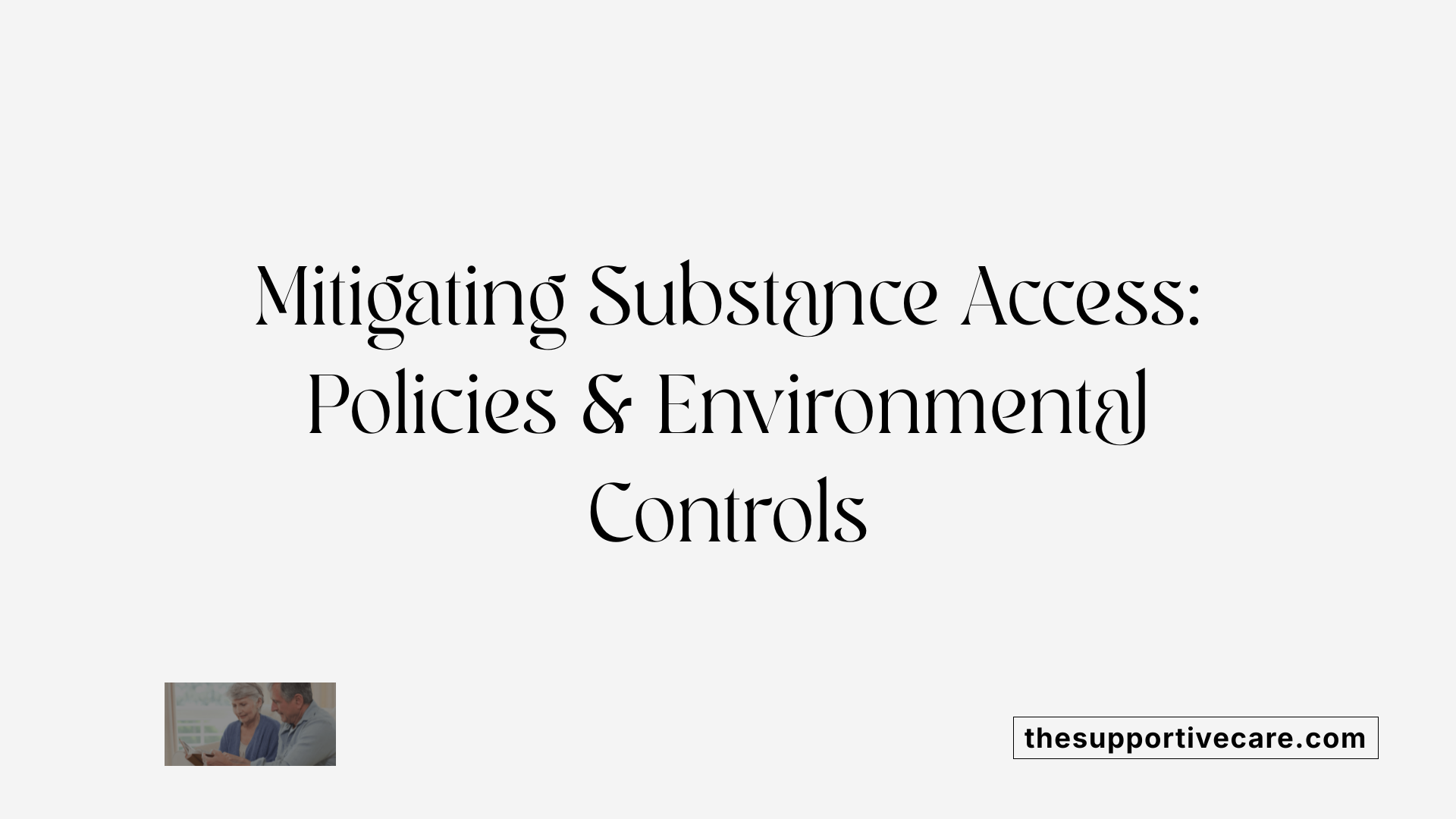
Facility Policies Controlling Access to Alcohol and Opioids
Long-term care facilities have a crucial role in managing residents' access to substances such as alcohol and opioids. Implementing strict facility policies helps reduce the risk of substance misuse and promotes resident safety. These policies often include regular monitoring and controlled storage of medications and restricted substances within the facility.
Admission Agreements Preventing Contraband Introduction
Admission agreements serve as an important preventive measure by outlining the rules about substance possession and use within the facility. These agreements inform residents and their families about the prohibition of contraband items like unauthorized drugs or alcohol, thereby reducing the chances of these substances entering the community.
Environmental Safety Measures in Long-Term Care Settings
Creating a safe environment involves physical controls like securing medication storage areas and conducting regular room checks when appropriate. Staff training in recognizing and responding to signs of substance misuse, coupled with a nonjudgmental and supportive approach, contributes to a culture of safety and care.
Together, these policies and environmental controls form a foundation to mitigate substance access in nursing homes, safeguarding residents’ health and well-being.
Detecting Substance Use Issues Among Residents
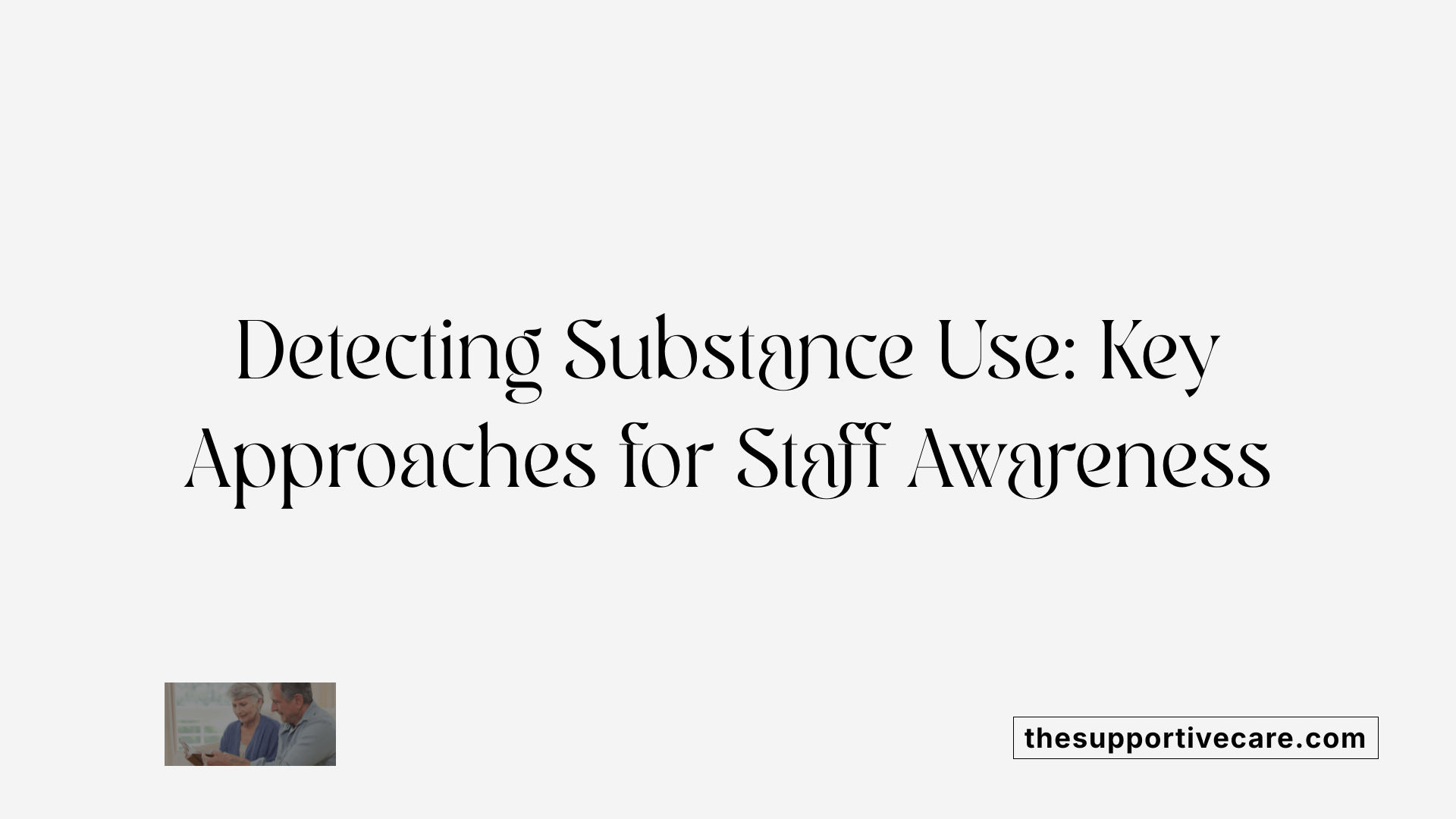
Medical History Review and Self-Disclosure
Detecting substance use disorders in long-term care residents starts with a thorough review of their medical history. This process often includes considering any previous diagnoses, treatment records, and patterns of medication use. Residents may sometimes self-disclose their struggles with substances, providing an important direct insight that can guide care planning.
Family Reports and Physical Indicators Like Needle Tracks
Family members can be essential sources of information, offering observations about behavioral changes or past substance use. Physical signs observed by staff, such as needle tracks or unexplained bruises, also serve as critical indicators of substance use. These visible cues prompt further assessment and support early intervention.
Use of Laboratory Testing for Diagnosis
In cases where substance use is suspected but not confirmed, laboratory testing can provide objective evidence. Tests such as blood and urine analyses help in detecting the presence of opioids, alcohol, or other substances, supporting accurate diagnosis and personalized treatment.
Together, these identification methods enable staff to address substance use disorders with sensitivity and precision, fostering timely and effective support within the long-term care environment.
Training Staff to Recognize Red Flags and Behavioral Indicators
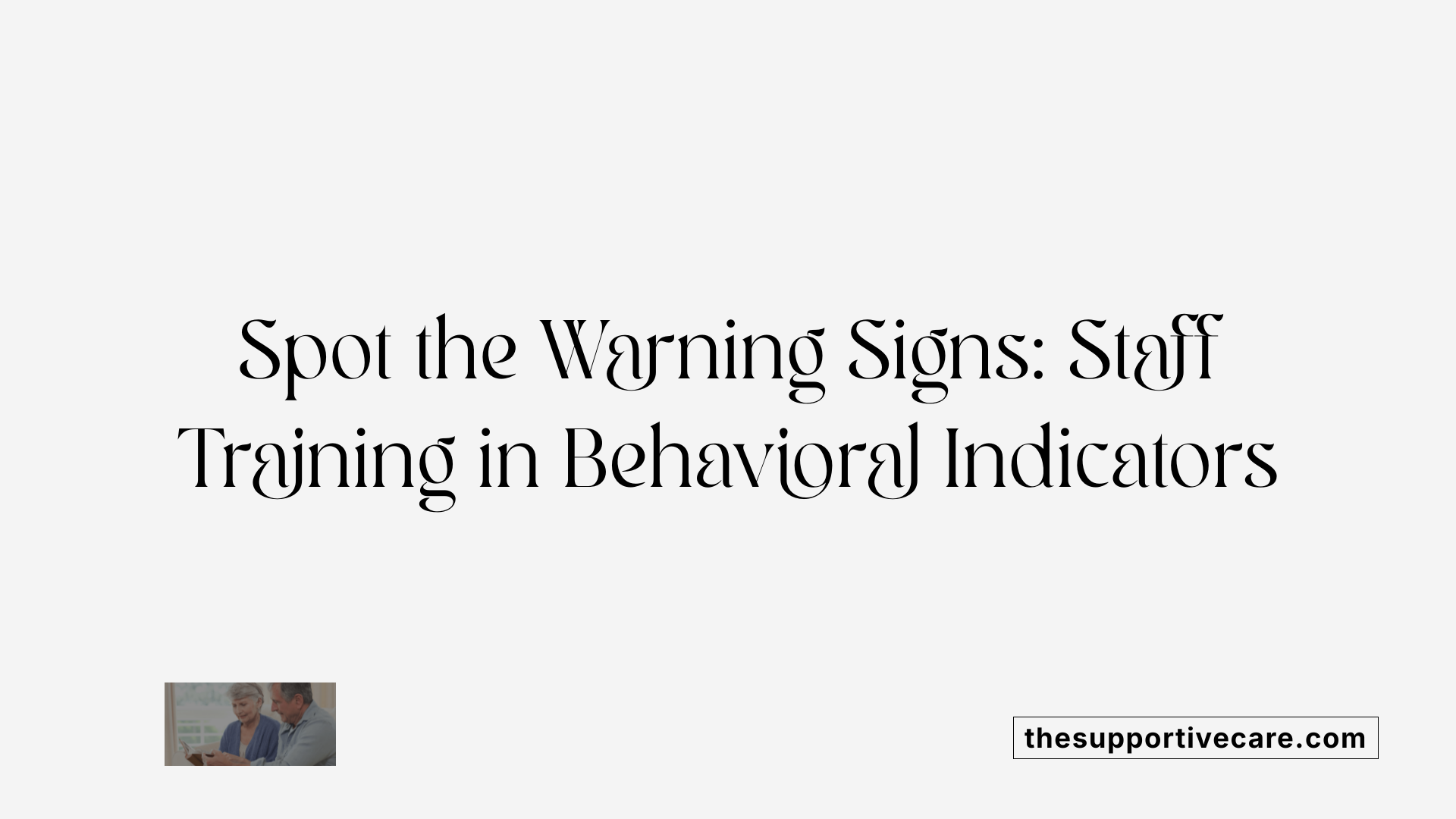
Recognizing Drug-Seeking Behaviors and Unexplained Pain Complaints
Staff in long-term care facilities must be vigilant in identifying behaviors that may indicate substance use disorders. Drug-seeking behaviors, such as repeatedly requesting specific medications or exhibiting signs of impatience for pain relief, can signal underlying issues. Similarly, residents may report unexplained or exaggerated pain complaints that do not align with medical assessments. Recognizing these signs early helps guide appropriate interventions and prevents misuse.
Identifying Withdrawal Signs Such as Mood Changes and Physical Symptoms
Withdrawal symptoms can manifest both physically and emotionally. Staff should watch for mood changes like increased anxiety, irritability, or depression. Physiological indicators include sweating, tremors, nausea, or changes in appetite. Timely identification of withdrawal signs allows for prompt management and reduces potential distress, improving overall resident safety and comfort.
Role of Behavioral Health Training in Improving Staff Readiness
Comprehensive behavioral health training equips staff with the knowledge and skills necessary to identify subtle and overt signs of substance use disorders. Training enhances confidence in managing complex behavioral needs through empathy, trauma-informed care, and effective communication strategies. Facilities often provide this training through online modules or in-person sessions, integrating it into onboarding and ongoing education. As a result, staff can better support residents, apply de-escalation techniques, and contribute to a safer, more compassionate care environment.
Role of Counseling and Therapy in Supporting Resident Recovery
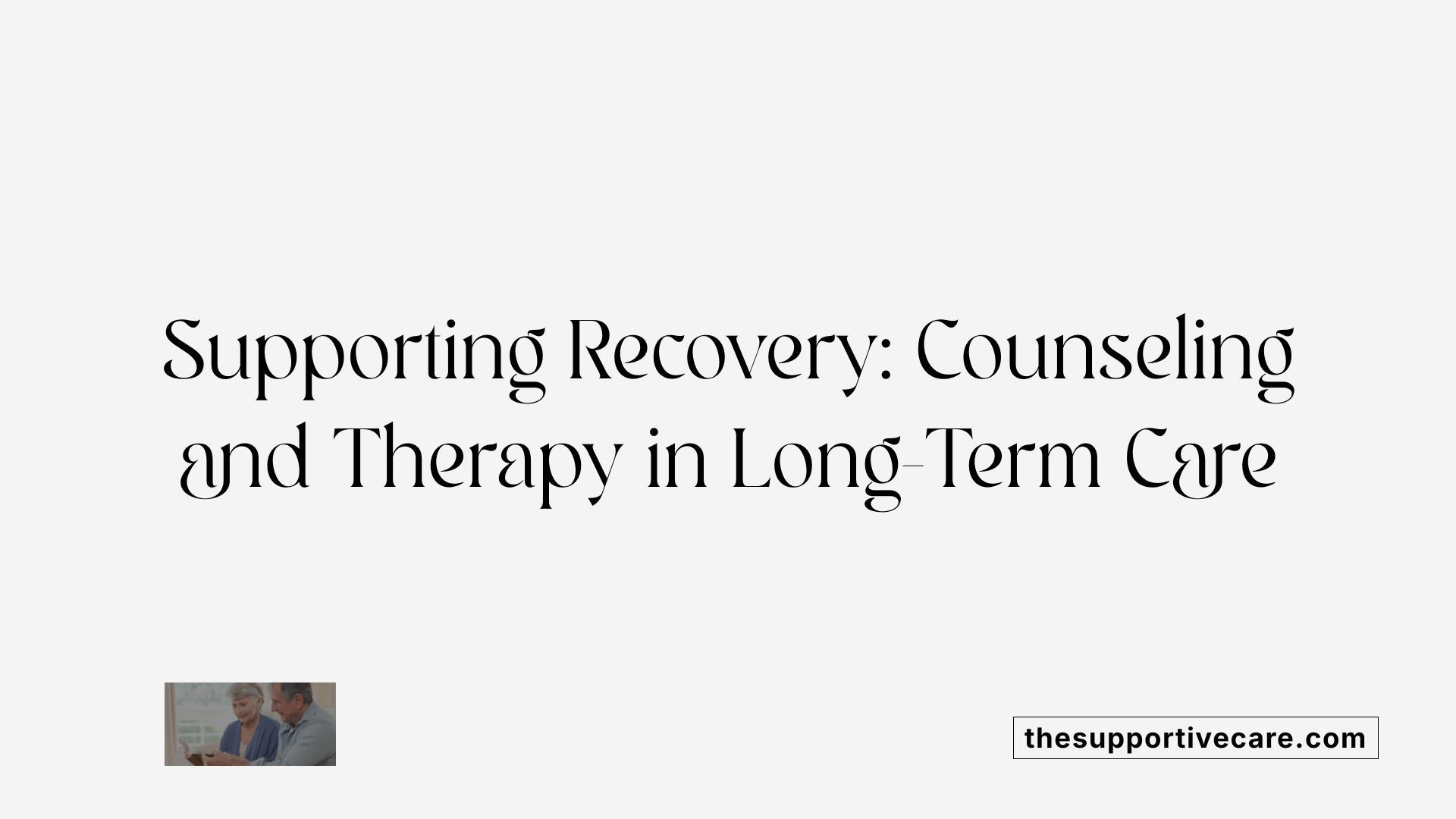
What role do counseling and therapy play in addiction recovery?
Counseling and therapy are fundamental in addiction recovery as they help residents understand and address the emotional and mental health issues driving substance misuse. Therapeutic support encourages residents to develop effective coping strategies, manage triggers, and reinvent thought patterns toward healthier behaviors.
Types of therapy used in long-term care settings
Long-term care facilities often offer a range of therapies tailored to individual needs. Behavioral therapy focuses on modifying harmful behaviors associated with substance use. Art, music, and pet therapies serve as creative outlets, providing emotional expression and reducing stress. These modalities create engaging and non-threatening environments that complement traditional counseling by promoting relaxation and emotional healing.
Counseling’s role in addressing root causes and coping strategies
Counselors work closely with residents to uncover the root causes of their addiction, such as trauma or mental health challenges. Through personalized sessions, they equip individuals with skills to manage cravings, handle stressful situations, and rebuild relationships. Counseling also fosters accountability and supports motivation, which are critical for sustained recovery.
Support from external groups
External support groups like Alcoholics Anonymous (AA) and Narcotics Anonymous (NA) offer residents valuable peer support and community connection. These groups emphasize shared experiences, providing encouragement and practical strategies for maintaining sobriety. Long-term care facilities may facilitate access to these groups or integrate them into a broader treatment plan.
Together, counseling, diverse therapy options, and external support form a comprehensive approach that helps residents recover and maintain sobriety within the supportive environment of long-term care communities.
Medication-Assisted Treatment and Overdose Prevention in Care Environments
How is medication-assisted treatment (MAT) used in managing substance addiction?
Medication-assisted treatment (MAT) is a comprehensive approach combining FDA-approved medications with counseling and behavioral therapies to effectively manage substance use disorders. In long-term care settings, MAT addresses both the physical and psychological components of addiction, improving residents' chances for recovery.
Medications commonly used in MAT include buprenorphine, methadone, naltrexone, and disulfiram. These medications help reduce withdrawal symptoms, curb cravings, block the rewarding effects of substances, and prevent overdose, which is critical in nursing facilities where residents may be vulnerable due to complex health issues.
Integration of medication with supportive therapies such as behavioral interventions, art or music therapy, and nutritional counseling enhances treatment outcomes. Residents may also participate in external support groups like Alcoholics Anonymous (AA) or Narcotics Anonymous (NA) to reinforce recovery efforts.
Use of medications like naloxone for overdose situations
In care environments, naloxone is a vital medication for overdose prevention. It rapidly reverses opioid overdose effects and should be easily accessible within facilities. Staff must be trained in its administration to respond quickly and effectively during emergencies, improving survival rates among residents with opioid use disorders.
Long-term care communities should develop policies to incorporate naloxone availability and ensure regular staff training on its use. This readiness not only safeguards residents but also supports a safer overall care environment.
Maintaining a team-based approach ensures clear roles in monitoring medication adherence, recognizing overdose signs, and delivering timely intervention. Documentation and communication across care teams are essential to optimize MAT implementation and overdose prevention.
| Medication | Purpose | Integration in Care Environment |
|---|---|---|
| Buprenorphine | Reduces withdrawal, controls cravings | Administered alongside counseling and behavioral therapy |
| Methadone | Reduces cravings and withdrawal | Monitored dosing in specialized or long-term facilities |
| Naltrexone | Blocks effects of opioids | Used post-detox to maintain abstinence |
| Disulfiram | Discourages alcohol use | Paired with counseling therapies |
| Naloxone | Reverses opioid overdose | Onsite availability with staff trained in administration |
Implementing Integrated Treatment for Co-Occurring Disorders

How do integrated treatment approaches benefit individuals with both substance abuse and mental health disorders?
Integrated treatment approaches offer a comprehensive way to address the complex and interconnected nature of substance use and mental health disorders. By providing coordinated care that simultaneously tackles both issues, these approaches reduce fragmentation in treatment and support a more holistic recovery process.
Coordinated care for substance abuse and mental health disorders
Integrated treatment involves multidisciplinary teams—including medical providers, behavioral health specialists, and nursing staff—working collaboratively to develop individualized care plans. This coordination ensures that the mental health needs, substance use challenges, and any related physical ailments are addressed together rather than in isolation.
Evidence-based practices commonly used include cognitive behavioral therapy (CBT), motivational interviewing, and medication management tailored to each resident’s unique needs. This person-centered approach respects the resident's history and complexities, including prior trauma and comorbidities, improving engagement and adherence to treatment.
Multidisciplinary teamwork and evidence-based practices
A successful integrated program draws on the strengths of various professionals:
| Team Member | Role | Contribution to Integrated Care |
|---|---|---|
| Medical Providers | Diagnose and manage physical and mental health conditions | Oversee medication, monitor health, coordinate detox if needed |
| Behavioral Therapists | Provide counseling and therapy | Implement CBT, motivational interviewing, support behavioral changes |
| Nursing Staff | Monitor daily care, identify behavioral changes | Train in identifying withdrawal signs, administer medications like naloxone |
Multidisciplinary teamwork ensures ongoing communication, clear documentation, and shared decision-making, essential for managing complex cases effectively.
Benefits of integrated approaches for improved outcomes
Integrated treatment promotes a culture of empathy and reduces stigma around dual diagnoses. Residents receive care in familiar environments with access to diverse therapies such as art, music, and pet therapy alongside traditional clinical approaches.
The benefits are multifold:
- Improved clinical outcomes: Reduction in substance misuse and better management of mental health symptoms.
- Stability in broader life domains: Including legal and housing situations.
- Enhanced accessibility: Adaptable across various settings, ensuring consistent care.
Overall, integrating substance abuse and mental health treatments in nursing facilities supports residents’ comprehensive well-being, leading to improved quality of life and safer living environments.
Relapse Prevention Strategies in Addiction Care
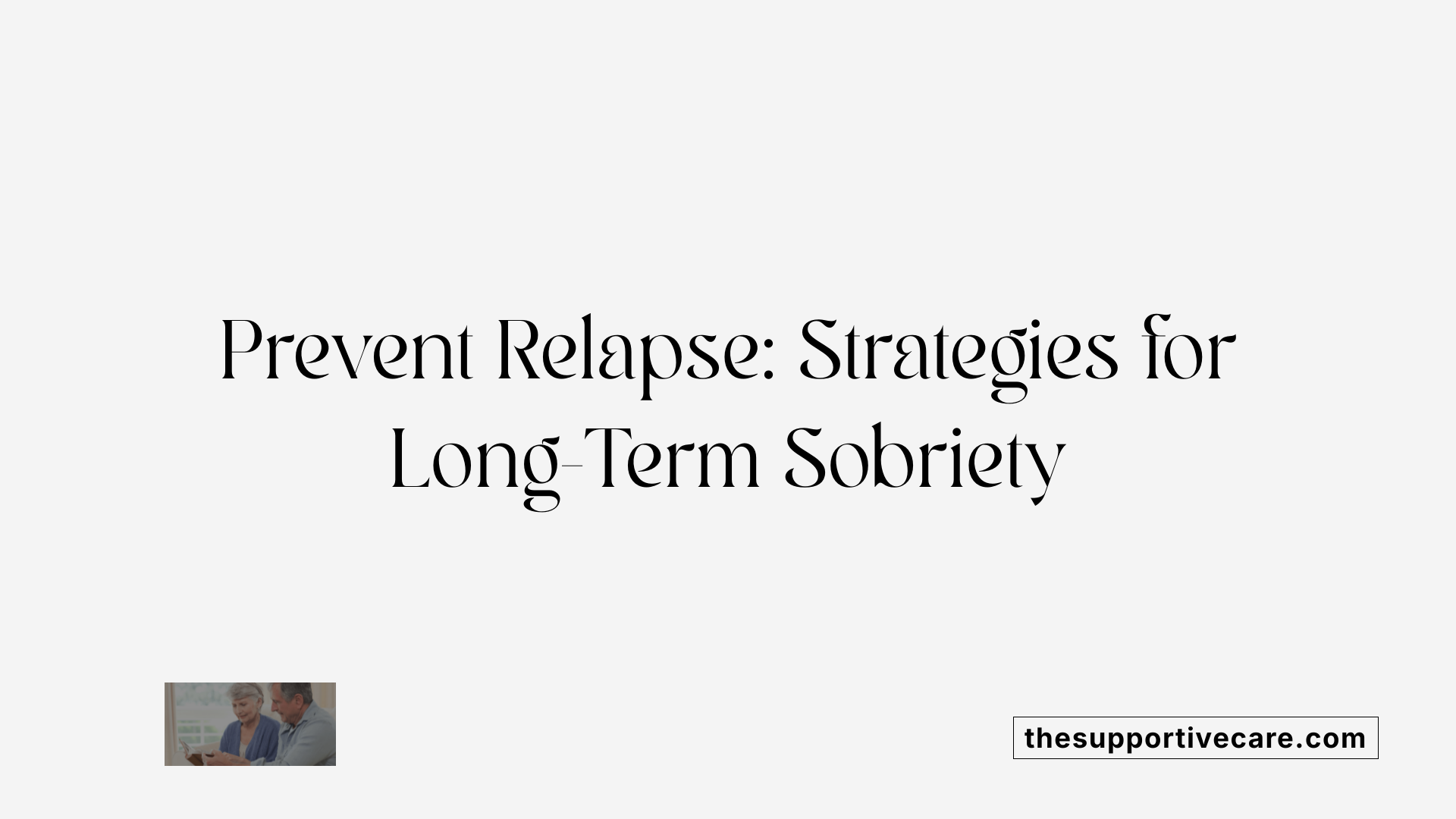
Why is relapse prevention an important part of addiction treatment?
Relapse prevention is crucial because addiction is a chronic condition that often involves cycles of remission and relapse. Understanding triggers and early warning signs, such as emotional distress or mental urges to use substances, helps prevent a full relapse. This approach addresses the complex psychological and environmental factors behind substance use disorders, enabling individuals to maintain long-term recovery.
Importance of recognizing triggers and early warning signs
Triggers can be internal, such as mood changes or stress, or external, like environments or social situations linked to past substance use. Recognizing these early signals enables timely intervention. Staff training in long-term care settings focuses on spotting behaviors like drug-seeking or signs of withdrawal, which are critical for relapse prevention.
Evidence-based therapies for relapse prevention
Behavioral therapies—such as cognitive-behavioral therapy (CBT)—and mindfulness techniques help individuals develop coping skills and resilience. Additional support through group activities like Alcoholics Anonymous (AA) or Narcotics Anonymous (NA) offers peer encouragement. Integrative therapies including art, music, and pet therapy complement these approaches by enhancing emotional well-being.
Role of monitoring and personalized plans
Ongoing monitoring through medical reviews, lab tests, and observation of behavioral changes supports early detection of relapse risk. Developing personalized relapse prevention plans tailored to each resident’s health status, history, and preferences improves outcomes. These plans include managing access to substances, medication administration (e.g., naloxone for overdoses), and clear team responsibilities for coordinated care.
The combination of recognizing triggers, utilizing evidence-based therapies, and implementing tailored monitoring forms a comprehensive strategy to reduce relapse risk and promote sustained recovery in long-term care environments.
Recognizing and Addressing Behavioral Addictions in Care Settings
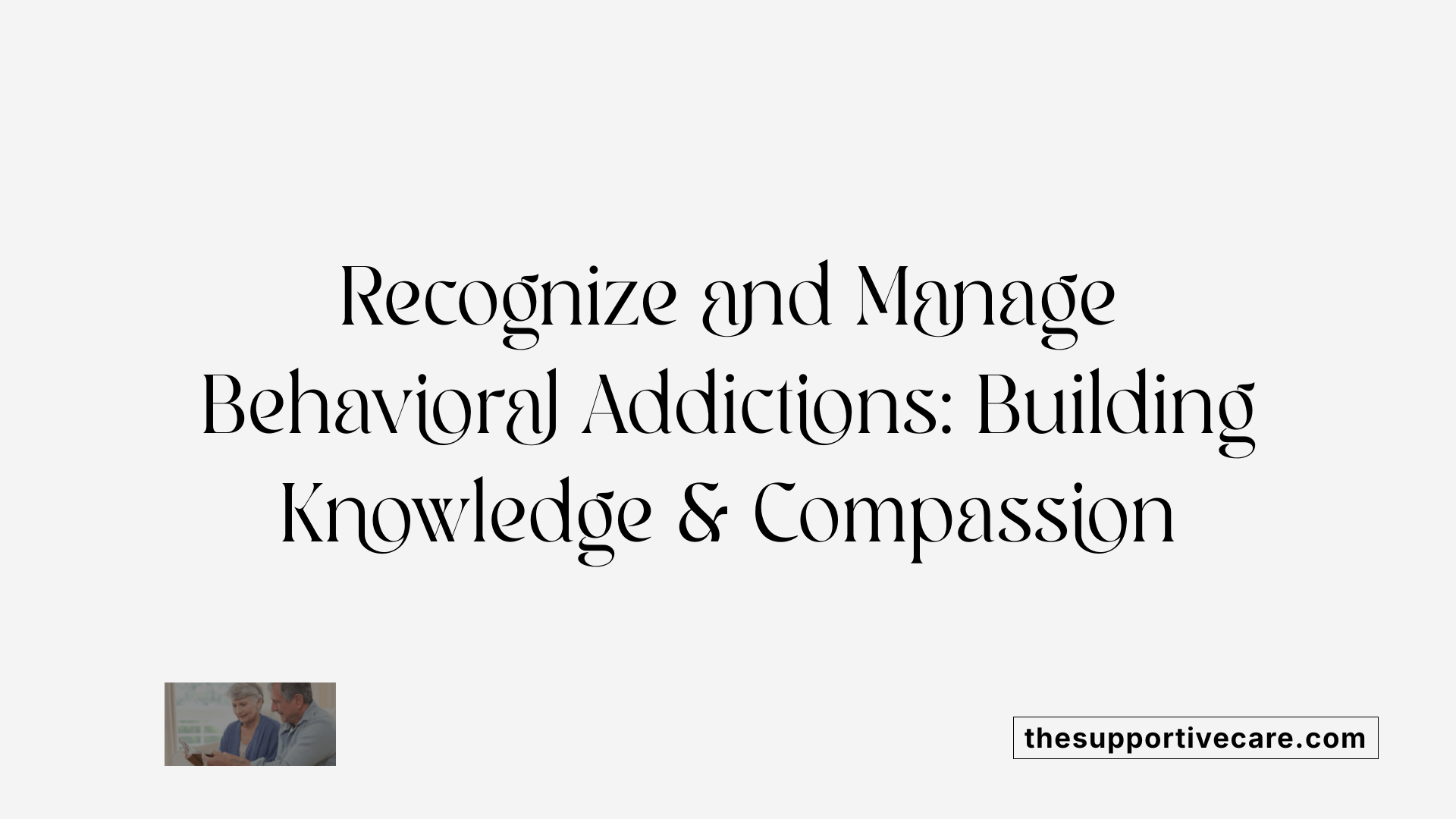
What are some common forms of addiction beyond substance abuse?
Behavioral addictions encompass compulsive engagement in activities without substance involvement but have similar impacts on the brain's reward system. Common behavioral addictions include gambling disorder, internet and gaming addiction, sex addiction, shopping addiction, food addiction, exercise addiction, and risky behaviors. These behaviors can cause significant harm by leading to financial difficulties, strained relationships, and mental health issues.
Signs and impacts of compulsive behaviors
Residents exhibiting behavioral addictions may struggle to control their urge to participate in certain activities. Signs can include obsessive thinking about the behavior, craving engagement, neglecting responsibilities, and withdrawal symptoms such as anxiety or irritability when not performing the activity. These compulsive actions often disrupt daily functioning and emotional well-being, creating complex challenges for care staff.
Therapeutic strategies and support group roles
Treatment for behavioral addictions typically involves individualized therapy focusing on managing triggers and preventing relapse. Although no medications are currently approved specifically for these addictions, behavioral therapies like cognitive-behavioral therapy (CBT) are effective. Support groups, similar to those for substance use disorders, offer peer encouragement and help maintain recovery.
Integrating these approaches in long-term care requires staff training to recognize behavioral addiction signs and to apply trauma-informed, empathetic care techniques. Including these strategies helps foster a supportive environment addressing the unique needs of residents with behavioral addictions.
Behavioral Health Training: Building Staff Competency and Confidence
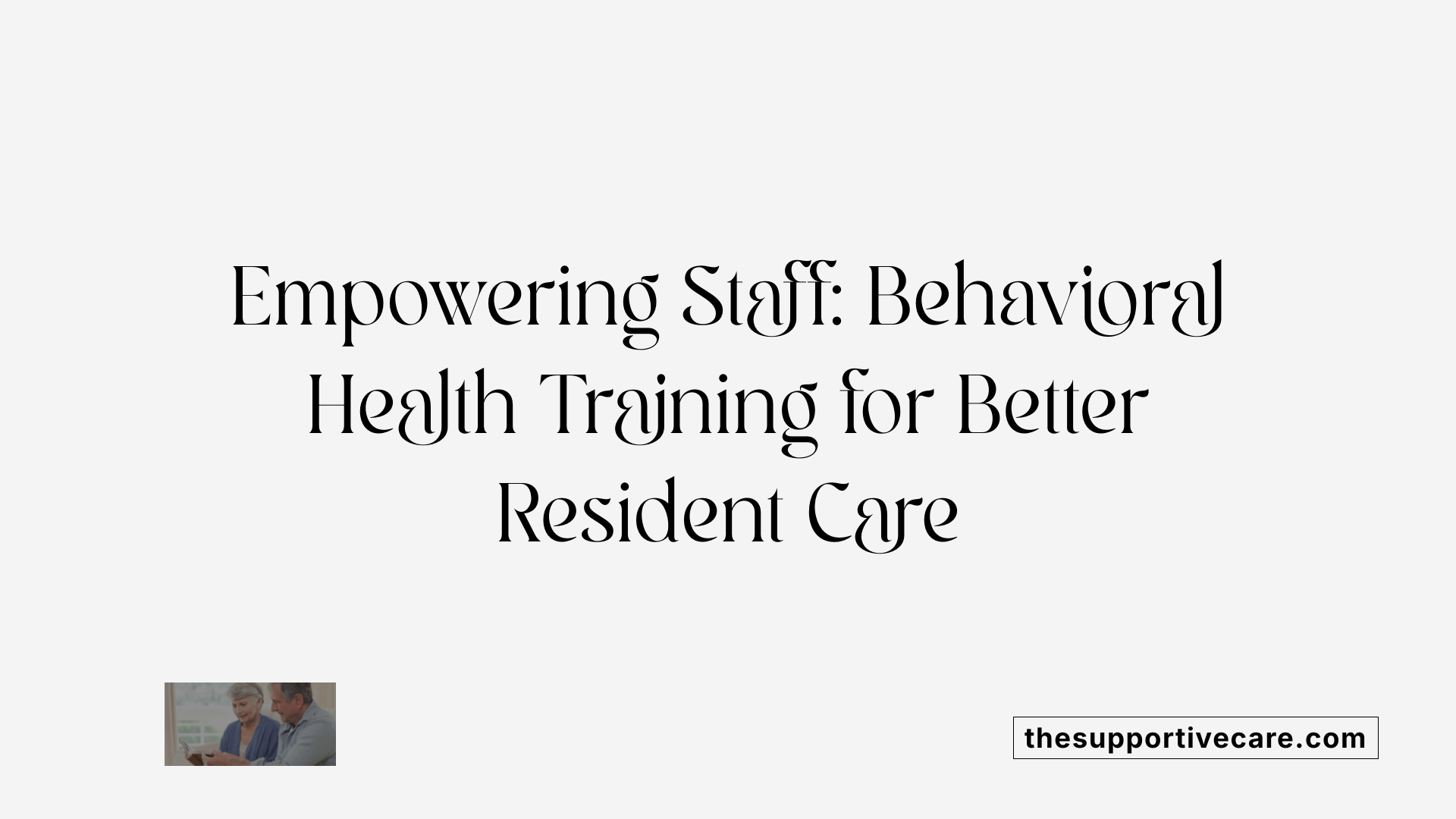
What Does Behavioral Health Training Include?
Behavioral health training for nursing facility staff covers a wide range of important topics designed to enhance understanding and management of mental health and substance use disorders among residents. Key components include trauma-informed care, which encourages empathy and sensitivity toward residents' past experiences, and cultural sensitivity to address diverse backgrounds respectfully. Safety measures also form a vital part of the curriculum, preparing staff to handle potentially dangerous situations, such as the discovery of weapons.
What Are the Training Methods?
Staff can participate in behavioral health training through two flexible methods. Online independent training allows learners to progress at their own pace with bite-sized videos, fact sheets, and knowledge checks. Alternatively, in-person group sessions offer interactive learning environments with structured modules and discussion opportunities. These can be integrated into onboarding programs, annual training agendas, or other educational activities to ensure continuous skill development.
What Are the Training Goals?
The training aims to help staff recognize early warning signs of escalating behaviors and understand the dynamics of behavior escalation and de-escalation. Staff learn to evaluate their personal readiness for managing challenging behaviors and acquire practical de-escalation techniques. The overarching objective is to foster a safer and more supportive environment for both residents and staff by promoting empathy, understanding, and effective behavior management.
These education initiatives empower staff to confidently address complex behavioral health needs, improving care quality and enhancing the overall atmosphere within long-term care communities.
De-escalation Techniques and Managing Escalating Behaviors

Recognizing Early Warning Signs of Escalation
Staff in long-term care facilities must be vigilant in identifying early signals that a resident's behavior may escalate. Warning signs include sudden mood changes, unexplained pain complaints, withdrawal symptoms, or drug-seeking behaviors. Recognizing these signs early allows timely intervention, preventing worsening situations.
Practical Approaches to De-escalate Challenging Situations
Effective de-escalation involves a mix of calm communication, active listening, and applying trained techniques tailored to the resident's needs. Staff can use behavioral insights gained from training to intervene constructively, avoiding confrontation. Structured modules with knowledge checks help reinforce these skills. Additionally, trauma-informed care and safety measures are emphasized to handle potentially dangerous scenarios safely.
Importance of Empathy and Constructive Solutions
Empathy is central to de-escalation, as understanding the resident's perspective fosters trust and cooperation. Behavioral health training promotes empathy-driven responses, guiding staff to focus on constructive solutions rather than judgment. This approach supports a culture of understanding and safety within care communities.
By combining early recognition, practical de-escalation methods, and empathetic engagement, long-term care facilities can better manage residents with behavioral health challenges, ultimately enhancing resident care and creating safer environments for all.
Ensuring Safety: From Handling Contraband to Potentially Dangerous Situations
Measures to control contraband and weapons discovery
Long-term care facilities play a crucial role in limiting residents' access to potentially harmful substances and items. To prevent the introduction of contraband such as alcohol and opioids, these facilities implement comprehensive policies, including strict admission agreements that define prohibited items. Regular monitoring and clear guidelines help staff intervene early and reduce risks associated with unauthorized substances.
Staff preparedness for potentially violent or unsafe incidents
Staff training programs emphasize the importance of being alert to signs of behavioral escalation that could lead to unsafe situations. Training equips staff to recognize early warning signs such as mood swings, withdrawal symptoms, or drug-seeking behaviors. Awareness and preparedness enable timely, nonjudgmental interventions, increasing safety for both residents and personnel.
Safety protocols incorporated in training curricula
Educational curricula for nursing home staff include trauma-informed care principles and cultural sensitivity to handle diverse resident behaviors compassionately and safely. Safety measures cover practical concerns like handling the discovery of weapons, ensuring procedures are in place to address these incidents without escalating tension. Interactive modules and debriefings reinforce these protocols, fostering an environment where safety and empathy coexist effectively.
Creating a Culture of Empathy and Support in Long-Term Care
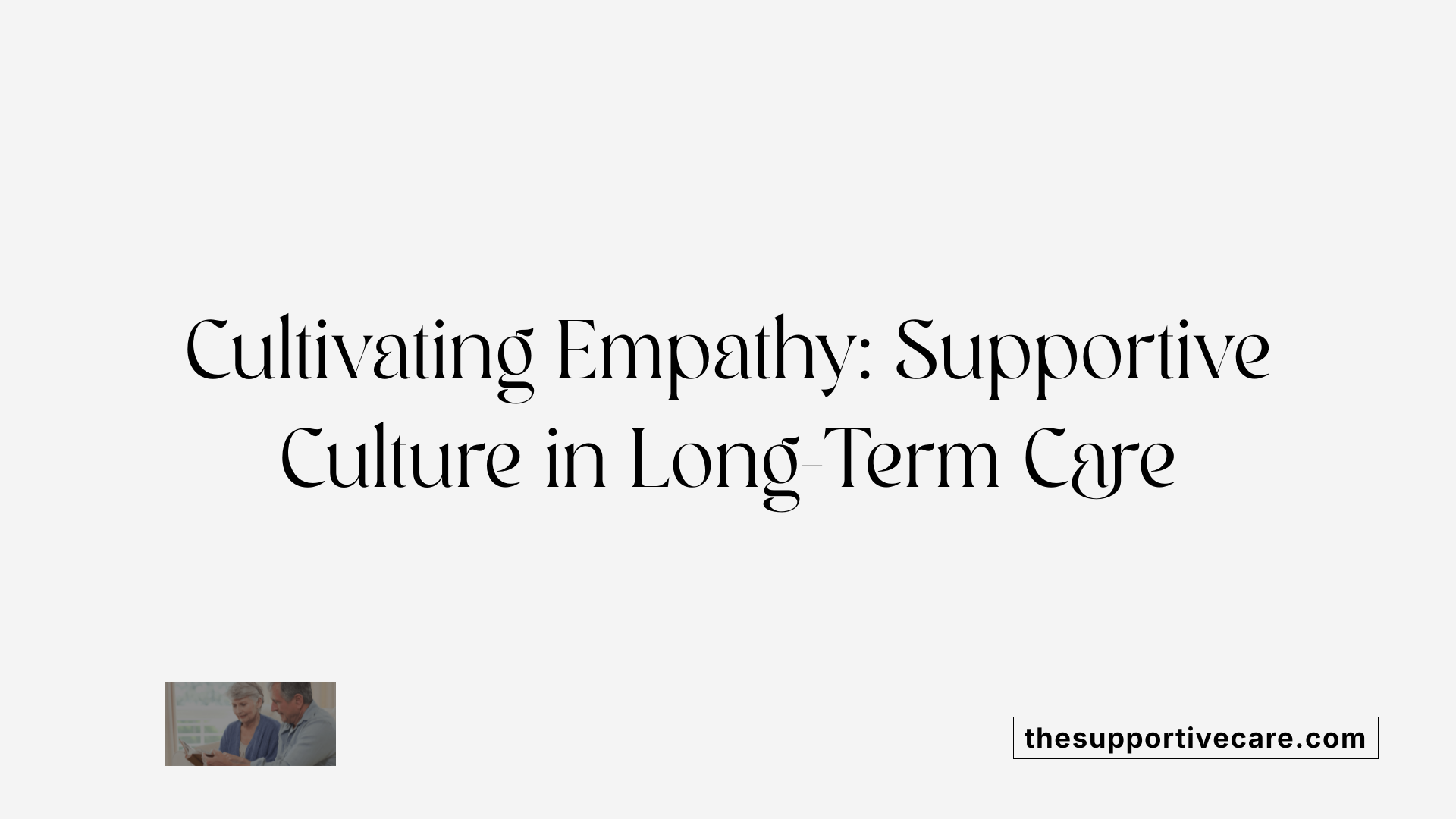
Fostering Understanding Between Staff and Residents
Building a culture of empathy starts with comprehensive behavioral health training that equips staff to recognize and understand the complex needs of residents with substance use disorders and mental health challenges. Training focuses on identifying behavioral patterns, promoting trauma-informed care, and applying cultural sensitivity to respect each resident's background and experiences.
Promoting Psychological Safety and Trust
Psychological safety is cultivated when residents feel accepted and not judged for their struggles. Staff are trained in de-escalation techniques and constructive communication, helping create an environment where residents trust their caregivers. Open recognition of substance use issues without stigma encourages honest dialogue, which is vital for effective treatment and support.
Benefits for Resident Care Quality and Staff Well-Being
A supportive culture improves care outcomes by addressing behavioral health needs more promptly and compassionately. For staff, enhanced confidence and skills reduce burnout and stress associated with challenging behaviors. Overall, the facility environment becomes safer and more nurturing, leading to better health and satisfaction for residents and a more positive workplace for caregivers.
Toward Safer, More Compassionate Care Environments
Successfully navigating difficult resident behaviors requires a concerted effort combining effective treatment services, comprehensive staff training, and robust policy frameworks. By embracing integrated care models and providing specialized behavioral health education, long-term care facilities can empower their staff to respond with confidence, empathy, and skill. In doing so, they create safer environments that enhance both resident well-being and staff satisfaction, ultimately fostering a culture where challenging behaviors are managed constructively and every resident has the opportunity for quality, compassionate care.
References
- When Residents Bring Substance Use Disorders with Them
- De-Escalation Strategies In-Service Toolkit
- Medications for Substance Use Disorders
- Medication Assisted Treatment (MAT)
- Medication-Assisted Treatment for Opioid Use Disorder in ...
- Home | SAMHSA - Substance Abuse and Mental Health ...
- Addiction Relapse Prevention - StatPearls - NCBI Bookshelf













